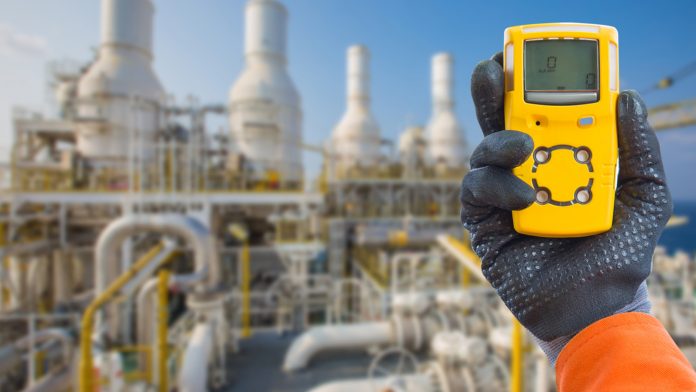Researchers at Chalmers University of Technology, along with several partners, have developed an optical sensor that can detect record low levels of hydrogen.
Hydrogen plays a critical role in the switch to renewable energy, however; when mixed with air, this renewable energy source becomes dangerously explosive. Because of this, it is essential to detect hydrogen leaks as quickly as possible.
The full report, titled ‘Inverse designed plasmonic metasurface with parts per billion optical hydrogen detection,’ was published in the scientific journal Nature Communications.
The risks associated with hydrogen
Hydrogen is seen as a vital player in the decarbonisation of the heavy transport sector, with hydrogen-powered trains, trucks, and aeroplanes being deployed and developed.
However, the risks of storing this renewable gas are well known. Only 4% of air exposure is required for the formation of an explosive mixture, known as knallgas, that can ignite at the slightest spark. Therefore, it is extremely important to deploy ultra-sensitive optical sensors to monitor leaks and alarm at critical levels.
“Safety is of the utmost importance in all use and storage of hydrogen,” stated Professor Christoph Langhammer, one of the main authors of the study.
“If leaks are detected early, they can be fixed so that you hopefully do not have to take the plant or vehicle out of service at all.”
Using AI technology to create the optical sensor
The new optical sensor consists of several nanoparticles that work together to detect hydrogen in their surroundings. In previous sensor designs, a large number of samples were produced and tested individually to see which one worked best.
However, with the new sensor, the researchers used advanced Artificial Intelligence (AI) technology to create optimal interaction between the particles, based on their distance, diameter, and thickness. The result of this is a sensor that detects changes in hydrogen concentration that are as small as a few hundred thousandths of a percent.
The secret behind the optical sensor’s low detection limit is the combination of the arrangement of the particles in a regular pattern on a surface and their fine-tuned dimensions. This method worked better for the sensor’s sensitivity when compared to the previous method.
Langhammer explained: “The technology around hydrogen has taken a giant leap, and therefore, today’s sensors need to be more accurate and tailored for different purposes. Sometimes a very fast sensor is needed, sometimes one is needed that works in a harsh chemical environment or at low temperatures. A single sensor design cannot meet all needs.”
How the sensor detects hydrogen leaks
The new optical sensor is based on an optical phenomenon, plasmons. These occur when metal nanoparticles capture light and give them a distinct colour. If the nanoparticles are made of palladium, or a palladium alloy, their colour changes when hydrogen levels in the surroundings fluctuate. These changes trigger an alarm if the levels become critical.
To find the ultimate combination of the arrangement on the surface and geometry of the particles in the optical sensor, the researchers used an AI algorithm – known as particle swarm optimisation – to achieve the highest possible sensitivity to hydrogen exposure.
Based on the AI design, the optimised hydrogen sensor was fabricated and verified to be the first-of-a-kind to optically detect hydrogen in the parts per billion range (250 ppb).
Now, the new sensor’s practical applicability will be further investigated within the newly started competence centre for hydrogen technology, TechForH2, which is funded by Chalmers.
New hydrogen collaboration projects
Chalmers’ new TechForH2 centre brings together both academia and industry to develop new hydrogen technology, with the main focus on the decarbonisation of heavy transport systems.
Its other areas of interest include fuel cells, technology, and innovations in the future hydrogen society.
“When the research community and industry merge, it can take us to the next level, so that what we produce can be applied and meet the needs and challenges that exist in the industry. This applies to sensor development, as well as research related to the propulsion of heavy vehicles or aeroplanes using hydrogen gas,” concluded Tomas Grönstedt.







